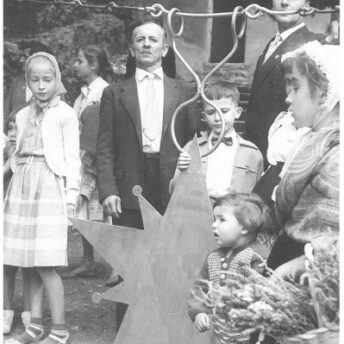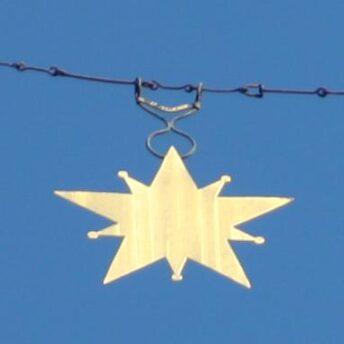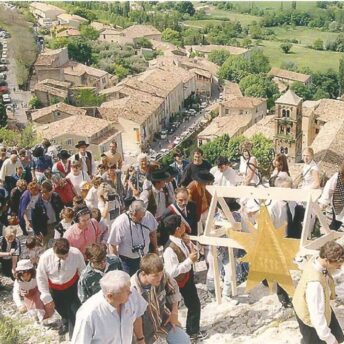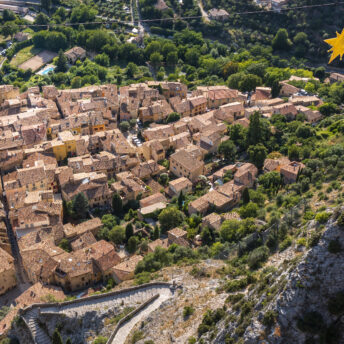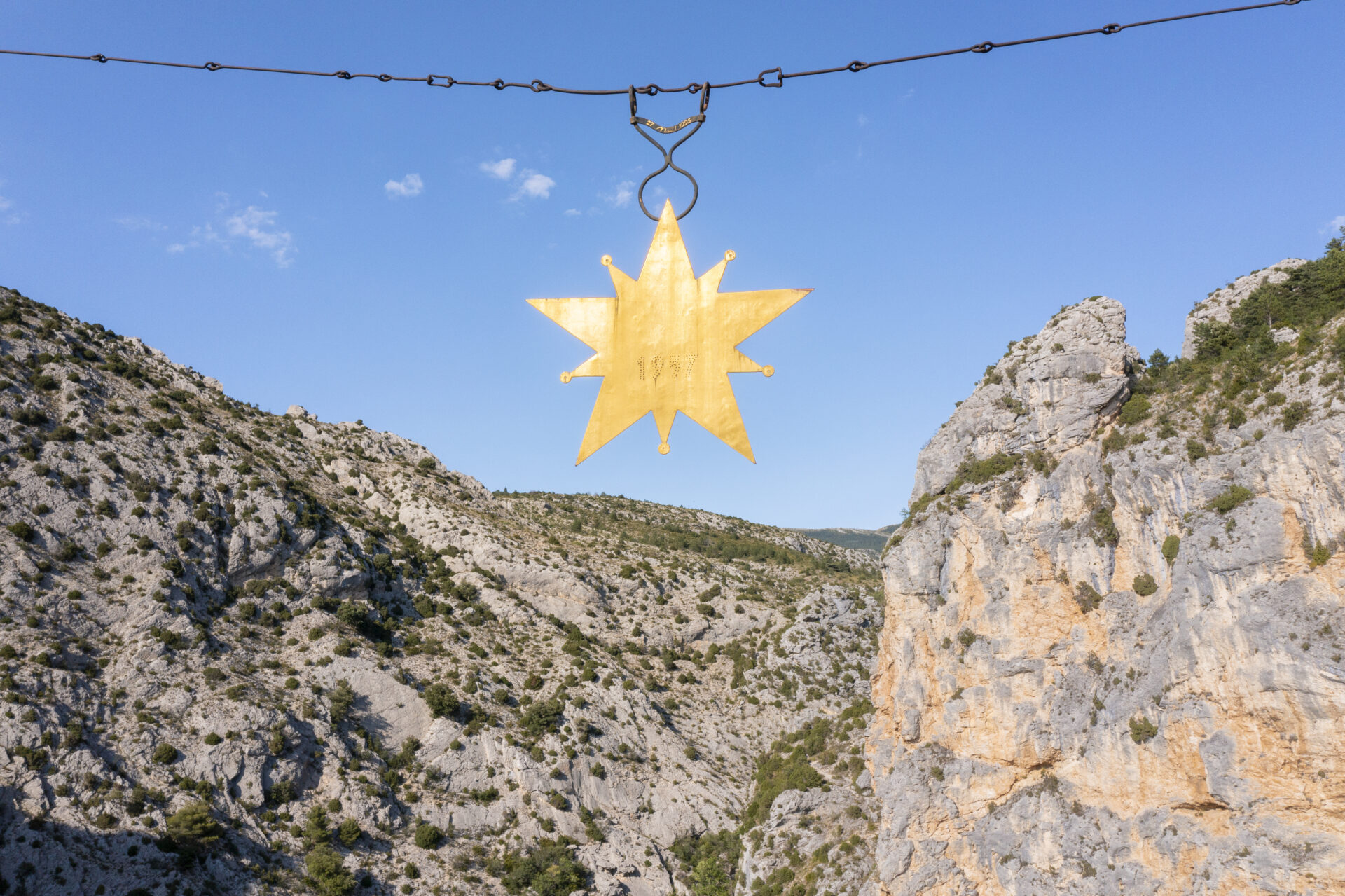
Les légendes de l’Étoile
Suspendue à 135 m de hauteur entre deux falaises, l’étoile dorée de Moustiers-Sainte-Marie intrigue autant qu’elle fascine. Symbole emblématique du village, elle flotte au-dessus des toits en tuiles, veillant sur les ruelles pittoresques depuis plusieurs siècles
Le Chevalier de Blacas
La légende du Chevalier de Blacas raconte l’histoire d’un seigneur nommé Blacas d’Aulps, parti en Croisade au 12ème siècle. Durant son périple, les Sarrasins le capturèrent et le retinrent prisonnier. Le Calife tenta alors de le convertir à l’islam, usant des charmes de son harem pour le convaincre. Fidèle à sa foi, le chevalier Blacas resta inflexible. Touché par son intégrité, le Calife choisit finalement de le libérer. Une fois rentré chez lui, le chevalier fit suspendre une étoile au-dessus de Moustiers pour remercier la Vierge Marie de l’avoir protégé. Les habitants de Moustiers accrochèrent cette étoile, symbole des armoiries de la famille Blacas (une étoile à 16 rais), comme un ex-voto au-dessus de la Chapelle Notre-Dame de Beauvoir. En 1885, Frédéric Mistral, fondateur du Félibrige, officialisa cette légende pour préserver et valoriser les traditions provençales.
Vous pouvez retrouver cette légende lors de votre montée à la chapelle Notre-Dame de l’Assomption.
Pour aller plus loin : l’auteur Jacques Lecugy a rédigé un roman historique sur un Chevalier de Blacas d’Aulps.
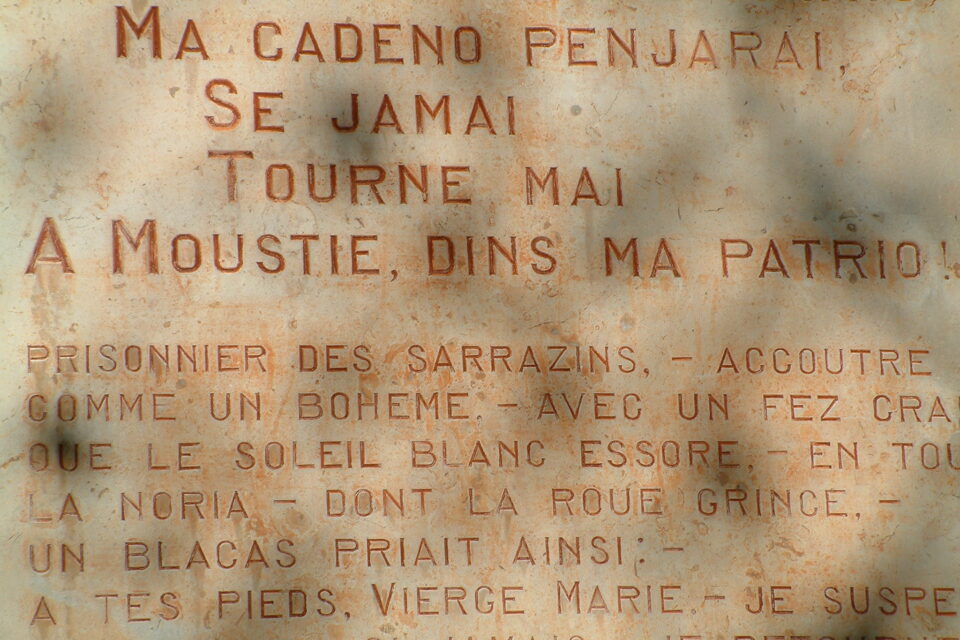 © OT Moustiers
© OT MoustiersLes autres belles histoires
Une autre explication souvent évoquée pour justifier la présence de l’étoile au-dessus de Moustiers-Sainte-Marie raconte l’histoire de deux jeunes villageois amoureux. Leurs familles, ennemies, leur interdisaient de se fréquenter. Face à cet amour impossible, ils choisirent de se suicider ensemble en se jetant des falaises. Pour sceller leur réconciliation, leurs familles décidèrent ensuite d’accrocher l’étoile au-dessus du village.
Bien d’autres légendes circulent sur l’origine de l’étoile, mais une version plus simple mérite aussi d’être retenue. Les habitants auraient installé l’étoile pour demander la protection de la Vierge sur leurs foyers et leur village.
Le mystère demeure
Au moins 11 versions de l’étoile se sont succédé depuis le Moyen Âge . En 1995, les artisans installèrent l’étoile actuelle, mesurant environ 1,25 m, suspendue à une chaîne de 135 m et pesant près de 150 kg. Après sa chute, Joël Joessel, doreur à Lorgues, la restaura et la recouvrit d’or fin. Aucune vérité historique définitive n’existe sur l’origine de l’étoile. Entre traditions orales, récits littéraires et croyances populaires, le mystère reste entier. Ce symbole multiple, qui attire toujours les regards et interroge les visiteurs, contribue à faire de Moustiers une destination à l’atmosphère unique.

